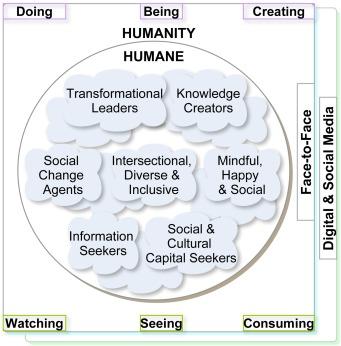Top Global Policies Reshaping the Future of Education: Key Trends and Impacts
Education systems across the world are undergoing transformative changes as governments implement new policies to address the challenges and opportunities of the 21st century.From the integration of digital learning to a growing emphasis on inclusivity, global education policies are not just shaping classrooms, but also preparing societies for the future. In this complete article, we’ll explore the key trends in education policy, their far-reaching impacts, and offer practical insights for educators, administrators, and stakeholders.
Why Are Global Education Policies Vital?
Global education policies provide frameworks that drive equity, innovation, and access in learning. They impact:
- Allocation of resources across education systems
- quality and relevance of curriculum
- Access to education for marginalized groups
- Uptake of technology in teaching and learning
- Teacher recruitment, training, and well-being
Wiht the rapid pace of change worldwide, adapting to these policies is crucial for building resilient, future-ready generations.
Key Trends in Global Education Policy
1. Digital Conversion and EdTech Integration
The COVID-19 pandemic has fast-tracked digital transformation in education. Governments are now creating robust policies to integrate technology into classrooms, ensuring continuity and expanding access.
- National Educational Technology Plans: Countries like the USA, Finland, and Singapore have introduced long-term digital strategies, enabling virtual and blended learning environments.
- Investment in Infrastructure: Increased funding for high-speed internet, digital devices, and teacher training on EdTech tools.
- Policy Impact: Enhanced access in rural and remote areas, tailored and personalized learning experiences, and improved digital literacy among students.
2. Emphasis on Equity, Inclusion, and Lifelong Learning
Educational equity is a driving principle behind many new international policies, aiming to reduce barriers and foster inclusive learning.
- UNESCO’s Global Education 2030 Agenda advocates for inclusive and equitable quality education, especially for girls, refugee children, and those with disabilities.
- Flexible Learning Pathways: Lifelong learning initiatives and recognition of informal learning are now part of policy discussions globally.
- Accessibility Standards: Mandates for accessibility in curriculum, digital content, and physical infrastructure.
- Policy impact: Narrowing achievement gaps, greater participation of underrepresented groups, and ensuring no learner is left behind.
3. Rethinking Curriculum for Future-Ready Skills
Globalization and automation have triggered a shift away from rote learning towards teaching critical 21st-century skills.
- STEM and STEAM Initiatives: Integration of Science, Technology, Engineering, Arts, and Mathematics into core curriculum.
- Focus on Digital, Financial, and Civic Literacy: Inclusion of coding, financial management, and civics education.
- Policy Impact: Preparing students for careers of the future, encouraging innovation, and cultivating responsible global citizens.
4.Teacher Training and Professional Progress
Recognizing the vital role of teachers, many education policies now prioritize continuous training and well-being of educators.
- National Professional Standards: Countries like Australia and the UK enforce standards for teaching competence and continuous professional learning.
- Support for Teacher Well-being: Policies address workload, mental health, and provide access to digital resources and peer networks.
- Policy Impact: Enhanced instructional quality and teacher retention.
5. Environmental Education and Sustainability
Sustainability has risen to the top of policy agendas, with global frameworks calling for integration of environmental awareness in education.
- UNESCO’s Education for lasting Development (ESD): Encourages every country to integrate climate change and sustainability topics throughout all education levels.
- Policy Impact: Equips future generations to address pressing issues like climate change and social duty.
Case Studies: Policies in Action Worldwide
Finland: Leading with Equity and Innovation
Finland’s education reforms have focused on minimizing achievement gaps, abolishing standardized testing for younger students, and empowering teachers with autonomy.The result: consistently high international performance and high student well-being scores.
india: National Education Policy 2020
India’s aspiring National Education Policy (NEP) 2020 has set a blueprint for early childhood education, mother tongue instruction, multidisciplinary universities, and digital learning access. The NEP’s holistic approach aims to make graduates both job-ready and socially conscious.
Brazil: Expanding Remote Learning During Crisis
During the COVID-19 pandemic, Brazil’s federal policies rapidly expanded radio, TV, and online content to keep students connected to learning. Partnerships with tech companies and community initiatives ensured outreach to marginalized children.
Practical Tips for Educators and Institutions
- Stay Informed: Regularly review policy updates from ministries of education, UNESCO, and education think tanks.
- invest in Digital Skills: Leverage online professional development and integrate EdTech tools in your classroom.
- Emphasize inclusivity: Audit your educational materials to ensure accessibility and representation for all learners.
- Engage Communities: Partner with local organizations, parents, and students in school decision-making.
- Prioritize Sustainability: Include sustainability-themed projects and lessons in the curriculum.
Benefits of Embracing Global Education Policies
- Improved Student Outcomes: More relevant and engaging curricula prepare students for global challenges.
- Greater Equity and Social Cohesion: Policies geared toward inclusion and accessibility foster more just societies.
- Technological Advancement: EdTech integration keeps educational institutions future-ready.
- Teacher Empowerment: Continuous learning and well-being policies drive job satisfaction and retention.
- Environmental Stewardship: Future generations are primed to tackle sustainability issues.
Looking Ahead: The Future of Global Education
The landscape of global education is dynamic, and policy innovation will remain crucial in addressing both persistent and emerging challenges. From preparing learners for the digital economy to ensuring every child, irrespective of background or location, can access high-quality learning, adaptive policies will be key.
Successful implementation requires not only smart legislation but also robust funding, continuous research, and cross-sector collaboration between educators, communities, governments, and industry partners. The journey is ongoing, but the rewards—a more equitable, skilled, and sustainable society—are within reach.
Conclusion
Global education policies are reshaping the classroom and the wider world. As nations respond to digital transformation,equity,sustainability,and future-ready skills,the impacts of these trend-setting policies will be profound and enduring. For educators, students, and policy-makers alike, staying informed and adaptable is essential for success in the rapidly evolving educational landscape.By embracing these changes and working collaboratively, we can unlock the full potential of education for every learner around the globe.

